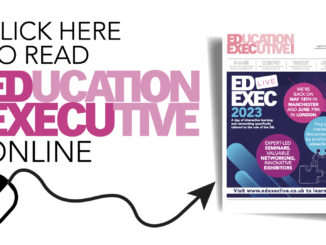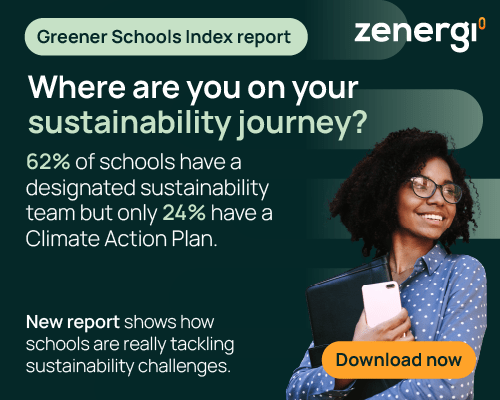
Now that we are a few months further into the pandemic – and into our second lockdown – Al Kingsley believes it is a good time to evaluate the changes that have occurred within edtech in education
As we settle into the new reality of using the online space to enable the continuation of education amidst disruption to school time, it is useful to look back and see just how far we have come.
First lockdown
As we know, at the point of the first lockdown, not all schools were on a ‘level playing field’ when it came to technology use. Some had already incorporated lots of edtech into their teaching and learning, which made for an easier transition to online-led education; others, however, were on the back foot, and had to try to catch up very quickly.
With the lockdown came an evolution of the term ‘blended learning’. Up until that point, blended learning had seen students being taught in person in the classroom, with opportunities for edtech interaction incorporated into lessons, providing them with a mix of synchronous and asynchronous learning activities.
With teachers and students now remote from each other, it has taken on a new definition; the ‘blend’ has become a mix of in-school and remote (or ‘at home’) education, the synchronous element is now the real-time, technology-based teacher interaction with students, while the asynchronous component is now provided in the form of pre-recorded video exemplars, resources for project work for self-study, and so on.
Another hurdle to overcome was that of teachers’ edtech confidence. Many were new to the concept of teaching with such a heavy emphasis on technology, and had to work hard to not only learn new solutions at breakneck speed to maintain contact with students learning at home, but to also adapt their lesson plans for the online arena. Without prior experience on this scale, some got the balance right, and some did not, which was only to be expected.
Of course, not every student has access to technology at home, and not every home has the connectivity or devices needed to simultaneously support one or more students learning online, plus parents working remotely. The virus certainly highlighted the digital divide – and this was something that was not, and is not, easily solved.
What is different this time?
The main change for the education sector during this new lockdown is that there is a clear government mandate that schools and universities should remain open. We should remember, though, that schools never completely closed during the first lockdown; they were still open for vulnerable children and those of key workers. So, actually, it is not the case that schools are ‘staying open’, more that the aspiration now is that all students will be in school. However, the likely path over the next few months will be increased cases of COVID-19 within student bubbles so the blended learning model of in-school and remote teaching will come into play once more.
This time, though, teachers’ confidence with technology is much improved. Once schools selected a platform to work with, teachers dedicated themselves to learning how to use it, and getting to know the possibilities it offered for their online lessons. Nevertheless, there is still more to be done and, for many schools, supporting their teachers to learn, and be confident with, edtech will rightly become an ongoing process. It certainly has highlighted the need for continuing CPD in this area.
Despite ‘staying open’, for many schools a reduced timetable is a real possibility this winter – staff numbers permitting – with students attending for just a couple of days a week, allowing schools to significantly reduce the density of children in the building and so minimise the virus transmission risk.
From our own and others’ experiences during the first lockdown, we are all now much more conscious of the importance of looking after wellbeing and mental health. Providing face-to-face connectivity for students and teachers can mean so much – and it really helps those students feeling isolated at home to maintain their connection to their teachers and to learning. It’s also really important for schools to facilitate peer-to-peer collaboration because we know there is much value in children being able to connect and communicate between themselves as part of their learning journey.
What will edtech use look like in the future?
The coronavirus has been the greatest accelerator of change in school edtech in recent times. Schools have already learned how to use appropriate solutions for teaching and learning, embedded their use in lessons, and increased their user confidence, enabling learning to continue in new and interesting ways.
Some of the technology, and how it has been used, during the pandemic has already created positive change. A good example is the move to online parents’ evenings. Schools have already found it is much easier to manage fixed time slots online for each set of parents/carers to avoid cutting into the next parent’s time. In addition, parents actually prefer having a private conversation with their child’s teacher, rather than being in a room full of others. The move online is also much easier for working parents, who can drop in for the required time with minimal disruption.
The online tools and techniques schools have used during this time will be just as appropriate for exam revision sessions during the Easter holidays, saving teachers and students from travelling into school. Schools will need to ensure, though, that students can either connect live or access recordings of these sessions subsequently, so that nobody misses out.
Some of the schools I have talked to have also noted that the use of technology has significantly improved their engagement with parents – and particularly those who have traditionally been harder to reach – which is enormously positive. After having to support their children’s learning at home during the first lockdown, many parents have a new-found appreciation for the job that teachers do, and I sincerely hope the post-COVID world sees a continuation of that!
Al Kingsley is chair of two MATs (as both a trustee and member), chair of his local governors’ leadership group, and is a member of the Regional Schools Commissioners’ East of England and north-east London headteacher board.




Be the first to comment